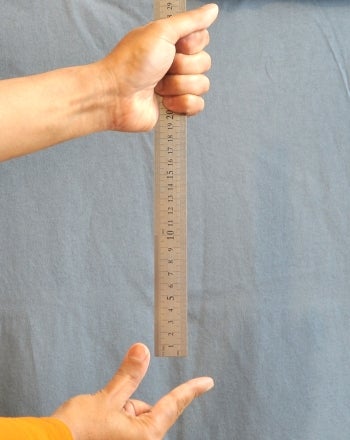
Ruler Drop: The Science of the Catch
This intriguing experiment tests the time it takes for the brain to process what it is seeing into reacting and taking an action.
This intriguing experiment tests the time it takes for the brain to process what it is seeing into reacting and taking an action.
Build an actual, working battery, using simple materials commonly found at home.
Understand the fascinating science of refractive indices by making glass disappear in a transparent liquid. This easy experiment will leave you speechless.
A very easy experiment to create hard shapes simply by curdling milk with ethanoic acid.
In this activity, the programming concept of looping is introduced through a basic dancing routine.
A demonstration which shows just how important the interaction between the human mind and a computer is by illustrating the Stroop Effect.
Experiment with the science of density by stacking different liquids in order to make a colourful tower.
A fun and easy activity to introduce general programming concepts and to help anyone understand what an algorithm is using just graph paper and markers.
Store in a balloon the light (Hydrogen) gas produced from a chemical reaction. This gas will combust in the presence of oxygen, causing a small explosion to occur.
What are electromagnets and why do we use them? Discover the physics of electromagnetism by turning a nail into a magnet using simple, household materials.
What is image compression? Learn how binary numbers can be used to create and send graphical images over computer networks.
Mobius strips are truly fascinating. Created using tape and paper, these objects are a great way of introducing surfaces and edges.
Brown’s Criterion is an application of a result in Mathematics which takes advantage of the fact that numbers can be uniquely written in base 2.
Build your own smartphone projector using recycled materials. Experiment with lenses to learn how they focus light and affect image quality.
Discover how tilt sensors work by building your own circuit using an Arduino board. Learn the science behind these nifty sensors. Starter code available.
Discover how wind turbines work by building your own model. Observe the operation of a generator and learn how to power an LED in this exciting experiment.
Mix some colours using an Arduino Uno to control an RGB LED. Introduction to microcontroller programming. Sample code available. Great for beginners!
Design your own boat. Investigate how different materials and shapes affect movement. Master the physics of flotation with this hands-on experiment.
A simple activity illustrating the breaking down of colours by bleach by turning coloured solutions into colourless ones.
How do elevators work? What makes them safe? Learn all about elevator operation by building your own model and carrying out a hands-on investigation.